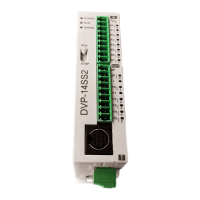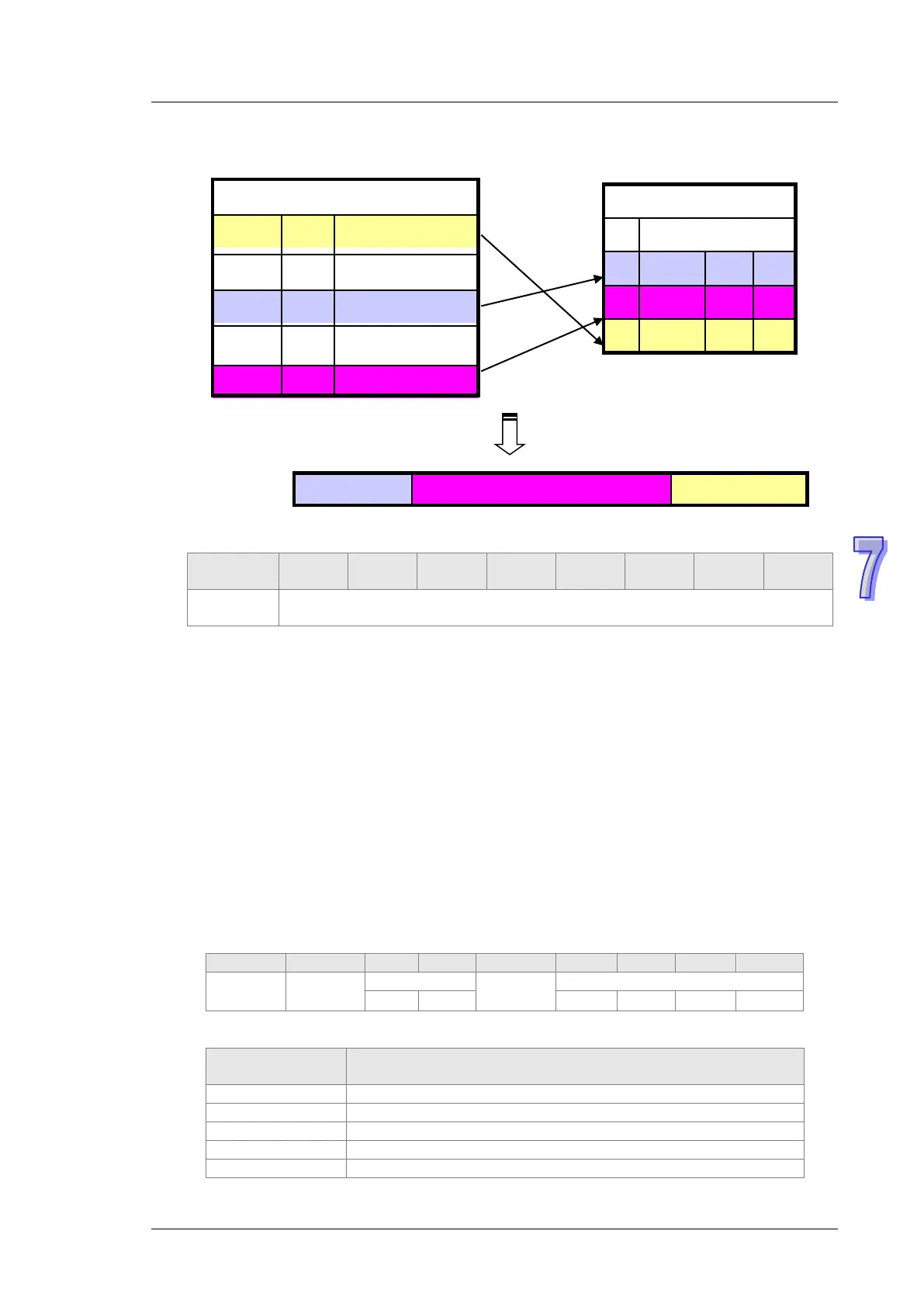7 CANopen Function and Operation
All the data in the PDO has to be mapped from the object dictionary. The following is an
example of the PDO mapping.
The data format for RxPDO and TxPDO is as follows.
COB-ID Byte 0 Byte 1 Byte 2 Byte 3 Byte 4 Byte 5 Byte 6 Byte 7
Data
SDO (service data object)
The SDO is used to build the client/server relation between two CANopen devices. The
client device can read the data from the object dictionary of the server device, and write the
data into the object dictionary of the server device. The visit mode of the SDO is
“client/server” mode. The mode which is visited is the SDO server. Every CANopen device
has at least one service data object which provides the visit channel for the object
dictionary of the device. SDO can read all objects in the object dictionary, and write all
objects into the object dictionary.
The SDO message contains the index information and the subindex information which can
be used to position the objects in the object dictionary, and the composite data structure
can easily pass the SDO visit. After the SDO client sends the reading/writing request, the
SDO server replies. The client and the server can stop the transmission of the SDO .The
requested message and the reply message are divided by different COB-IDs.
The SDO can transmit the data in any length. If the data length is more than 4 bytes, the
data has to be transmitted by segment. The last segment of the data contains an end flag.
The structures of the SDO requested message and reply message are as follows.
The format of the requested message:
(
The definition of the requested code in the requested message:
Description
Stopping the current SDO function

